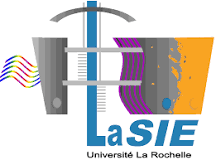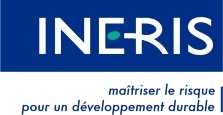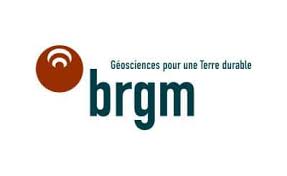









GdRI Multi-Physics and Multi-scale Couplings
in Geo-environmental Mechanics
Catastrophic failures and triggering mechanisms
We envision herein to analyze instability and failure mechanisms on the microstructural scale.
The transition from a solid-like behavior to an unsteady fluid-like behavior, together with
related flow issues and liquefaction and creeping mechanisms will be thoroughly considered.
These basic knowledge, including skills in both physics and micromechanics in granular materials
with hydromechanical couplings, will be the ground for developing advanced modeling of large
scale catastrophic failures in (marine or earth) soils. Rockfalls, landslides, snow avalanches,
as well as earthquakes or tremors are some of the phenomena that will be considered.
The research teams involved in this work will be located at the interface between geomechanics
and earth sciences, and will mobilize specific abilities in multiscale approaches including both
micromechanical and discrete numerical modeling.
Basically, two main focuses will be considered:
- A proper framework to analyze both diffuse and localized failure from a microstructural
point of view will be developed on the granular assembly scale. Existence of solids bonds
(possibly evolving according to the chemical context) and hydromechanical couplings will
be taken into account.
- The occurrence of instability modes (by flutter or divergence) will be investigated
on the geological bodies scale. This is clearly a conceptual breakthrough with respect
to the commonly used approaches.
Safety of storage reservoirs
During reservoir extraction (water, gas, petroleum) or fluid injection (gas, CO2),
the stress state within embedding rocks is modified. It is well-known that solids
(including rocks) are always deformable to some extent, with a change in volume due
to the porosity. It is therefore important to answer to the following question:
if a fluid body is extracted or injected in the reservoir, what are the following consequences:
- Amplitude of the deformation
- hydromechanical properties (porosity permeability, …) and thermo-physical properties
of internal fluids evolution
- Embedding rock failure or re-activation of existing faults, including effects
such as micro-seismicity or transitory fluid flow occurrence.
Hydraulic fracturing, as used in gas reservoirs, constitutes a prominent technological
tool that introduces key scientific issues, most of them being unsolved from an
international point of view. Modeling of both embedding rocks, due to hydromechanical
effects, and reactivation of existing faults, can be regarded as an emergent scientific
field as well as a remarkable domain of application for numerical tools.
As increasing production requires increasing fluid flow, it is essential to understand
the mechanisms governing the cracking process of a material. To this purpose, capturing
the physical and numerical bases governing cracking initiation is an actual issue
Another issue is related to the durability of storage confining structures,
for radioactive waste storage. This is mostly concrete structures, in interaction
with the surrounding geological context (argilites, known for their poor transfer properties).
In addition to both radioactive nature of wastes and environmental constraints, these media
are subjected to sever loadings: carbonic gas, thermo-hydric loading, diffusion of hydrogen
released from wastes. Heat and mass transfers take place and are partly responsible for the
material damage. Refined description of interface physic-chemical mechanisms on the
molecular scale (between the fluid phase of the porous medium and the solid phase
of the matrix), coupled with thermo-hydric loadings (drying, temperature), together with
the computation of macroscopic transfer properties on the structure scale, are among the
unsolved issues. The description of the evolution of the medium, induced by the transfer
mechanisms, should be embedded in the approach.
Energetic resources management is today a crucial issue that should be considered
through a sustainable approach. Identifying alternative solutions to carbon resources
is of paramount importance, even though they can cover the needs of humanities for decades.
In this context, carbon resources exploitation requires much more attention in order
to reduce the environmental impact. This is also the opportunity of transferring the
how-know built over several decades in the Oil & Gas field to alternative energy sources,
such as deep geothermal energy. This is exactly the purpose of the energetic geomechanics
community, as will be discussed during the EAGE workshop to be held in Brussels in 2015.
Extracting oil from bituminous sands with a minimal environmental impact is probably
one of the emergent scientific issues for sustainable hydrocarbon exploitation.
Such scientific issues embed multiphase behavior of unsaturated granular materials,
with heterogeneous inclusions (clay or shale). Using tools and concepts stemming from
the micromechanical modeling of granular soils with multi-physics coupling is required
to address this problematic.
Furthermore, extracting the fluid phase requires that a primary fluidization
of the material by volume increase (dilatancy phenomenon). Such a liquefaction
along a given loading path is well described in soil mechanics, using homogeneous
bifurcation concepts. Another technical solution consists in fracturing shale
inclusions to make the fluid flow easier, together with minimizing any risk of
failure within the reservoir. Such a fracturing can be done by spontaneous pore
pressure increase from in-situ water heating by electromagnetic excitation.
This innovative technics is investigated in the context of a strategic project
funded by the NSRC (Canada), including Grenoble-Alpes University (Lab. 3SR and IRSTEA)
Deep geothermal energy is supported by several industrial demonstrators all over
the world, one of them being in East of France. The issues induced by underground
water exploitation at a sufficiently high temperature (to ensure economic viability
of the technics) are close to those encountered in hydrocarbon production
(polluted and corrosive water extraction, soil and rock massif evolution, boring).
As a long-term objective, ultra-deep geothermal energy (8 000 m to 10 000 m) opens
on remarkable opportunities that should be considered. The IRN consortium is well
designed to investigate these research fields.
